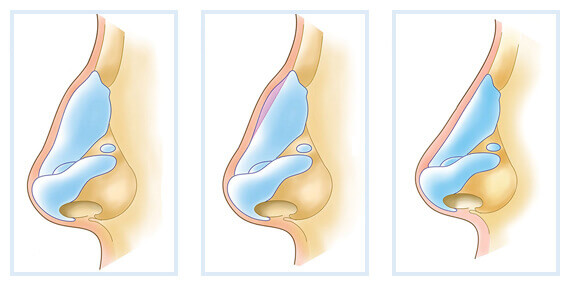Rhinoplasty - Nose Aesthetics
Op.Dr. Ömer Ekin - Aesthetic Plastic & Reconstructive Surgeon
Rhinoplasty - Nose Aesthetics
Rhinoplasty - Aesthetic nose surgery is a nose reshaping surgery. Aesthetic surgery is the most widely applied operations. Aesthetic nose surgery can shrink or enlarge your nose, change the shape of the nose tip or belt, narrow the width of your nostrils or change the angle between your nose and your upper lip.

It can also correct congenital or injury-related deformity or correct some breathing problems. Before deciding on the operation, ask yourself why you want to undergo surgery and what you expect from this surgery, think carefully and discuss them with your surgeon. The most appropriate patients for aesthetic nose surgery are not those who seek perfection, but are expected to improve their appearance and improve.
Complications (adverse outcomes) are rare and often insignificant if rhinoplasty is performed by an experienced plastic surgeon. Nevertheless, there is always a possibility of complications. These are reactions to infection, nosebleed, or anesthesia. After surgery, small capillaries that are cracked may appear as very fine red spots on the surface of the skin. Since aesthetic nose surgery is performed through the nose, there is no visible scar. However, when the open technique is used or if the large nostrils need to be narrowed, very small and thin marks on the base of the nose are often negligible. In approximately one out of every 10 cases, a second surgery may be required (for example, to correct a minor deformity). It is not possible to predict such situations.
The structure of your nose bones and cartilages, the shape of your face, the thickness of your skin, your age and your expectations are important for the planning of the surgery. The procedure is performed under general anesthesia under operating room conditions. Silicone tampon and thermoplastic splint is applied at the end of the operation. The post is a one night stay and the next day is discharged. You come to clinic for controls. In these controls, silicone tampon and thermoplastic splint are removed and postoperative photographs are taken. Most patients with aesthetic nose surgery can get up and walk around in two days and return to school or work life that is not too tiring a week after surgery. It will take several weeks for you to fully return to your daily routine. You should avoid movements that require high effort for two to three weeks.

At the tip of the nose, very little swelling will continue for maybe months. The actual outcome of aesthetic nose surgery will probably not occur for a year or more. At first you may get some unexpected reactions from your family or friends. They might say they didn't see a change in your nose. Or they might be a bit offended, especially if you have changed something that they see as a family or ethnic trait. If this happens, try to remember why you decided to have this surgery at the first moment. If you have achieved your goal, your surgery has been successful.
Nose Repair (Nose Reconstruction)
Nasal reconstruction is a repair surgery. Tissue loss is usually required in cases of concomitant traffic accidents, skin cancers, burns, gunshot wounds and congenital problems after complete or partial loss of the nose.

In addition, nasal reconstruction is also required for patients who have undergone one or more cosmetic surgeries, failed satisfactory results and have a broken nasal roof. Repair is provided by considering the placement, size and characteristics of the missing tissue in the nose. Other healthy tissues are used to repair the tissue. For small tissue loss, the nose's own tissues are used, and for larger losses, adjacent tissues such as cheek and forehead are used. If necessary, cartilage graft is taken from the ear or rib to reconstruct the cartilage roof.
The procedure is performed under general anesthesia under operating room conditions. Small tissue defects on the nose can be repaired under local anesthesia. The duration of the operation lasts from 1 to 5 hours depending on the size of the operation. There may be 1-2 days of hospitalization after the procedure. Special intranasal silicone pads may be used. The removal of these buffers may take 2-3 weeks in some cases. In some cases, a second complement surgery is performed three weeks after surgery. This operation is shorter than the first operation.
